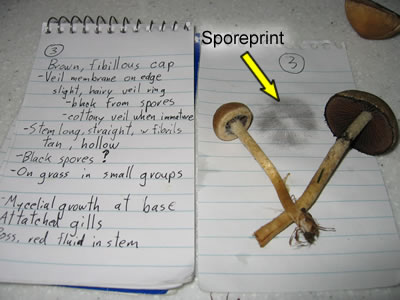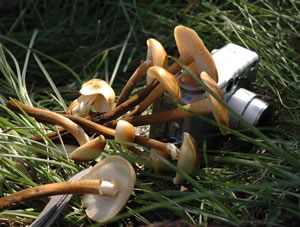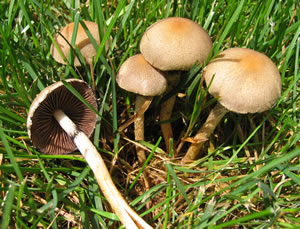 Documenting key features
Documenting key features
As you could guess, you won't be able to arrive at a proper ID without checking out all the key features of the mushroom in question. What you want to generate is a list of features that you can compare to the feature list of potential candidates in your field guide. These features will be essential in the "keying out" process, which is based on feature combinations.
The Identification Pt. 1 section of this website is dedicated to major key features. Each category in the Identification Pt. 1 section was specifically chosen based on the major features that are noted in field guides. Become familiar with these, and note them as you see them.
Almost every feature should be visible in the field. The only one requiring additional effort is the spore color. Sometimes, you will be fortunate and find a spore deposit on materials beneath the mushroom cap. But when you don't, you'll need to collect a sporeprint.
I prefer to keep a small notepad with me, and for each specimen, document all the key features I can on a single page. I'll label the page with a number, which will correspond with photos and a sporeprint.
 Field photography
Field photography  - Take photos that show the most key features possible.
- Take photos that show the most key features possible.